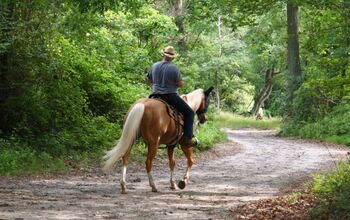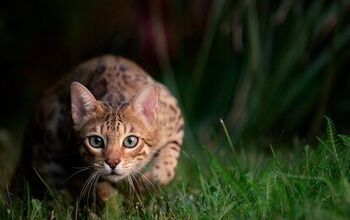Best Horses for English Riding

A highly recognized form of riding, English Riding is seen in a wide range of activities and competitions, including classical dressage, show jumping, English tack, racing, polo, and riding for pleasure. The style is characterized by the use of a flat, lightweight English saddle that allows for a better connection between the rider and their horse. Of course, some horse breeds will be better suited to this equipment and the form of communication used in English riding.
Whether you’re an experienced equestrian currently considering a new horse or a new rider excited to start your English Riding journey, we are happy to help you kick-start your research. We have compiled a list of the 10 best horses for English Riding.
Hanoverian
The Hanoverian is far from a new face in the English Riding world. In fact, the breed registry for these sport horses is one of the oldest in existence. Dating back to the early 18th century in the Hanover region of Germany, the breed was first used to pull plows and carriages. However, their versatility, athleticism and jumping ability make them a sought-after breed today in show jumping and dressage. They are friendly horses that are faithful to “their person,” making them a good choice for those looking for a horse that will double as a competitor in their equestrian sport of choice and a companion.
Andalusian
Originating from Spain, the Andalusian is a calm and docile horse, making them ideal for newer riders. But don’t let this fool you – their incredible movement and performance also make them a great option for those interested in taking part in advanced equestrian activities, including dressage and the show jumping ring. They have a strong, elegant appearance with their long, thick tails and manes. Most Andalusians are gray or bay, but there have been many coat colors found throughout the history of the breed.
Morgan Horse
The Morgan Horse is a compact and highly versatile breed that is often seen in both English and Western Riding circles. They have been used for many purposes throughout history, including cavalry horses, harness racing, and carriage driving. Today, they are often seen in show jumping, dressage, and therapeutic riding programs. They are very gentle, well-mannered, and cooperative. This makes them great horses for riders of all ages and skill levels. The popularity of the breed has led to Morgan-only shows being held across the US.
Arabian
Smaller in size compared to many of the more popular riding horses, the Arabian is a beautiful and intelligent breed of horse. Originally used for transportation and hauling loads, they were bred for their athleticism and endurance. They had a very comfortable and smooth gait that made them enjoyable to ride for riders of all ages and skill levels. Today these traits allow them to excel in a wide assortment of different equestrian activities, including dressage, endurance riding, show jumping, and pleasure riding. While the skin of the Arabian horse is black, their recognized colors include gray, bay, roan, chestnut, and black.
Dutch Warmblood
Often seen in dressage, jumping, and driving activities, the Dutch Warmblood is a spirited, athletic, and highly reliable breed. All these traits make them an excellent choice for both competitive and recreational pursuits. In fact, Dutch Warmbloods have been seen excelling in the Olympics, World Equestrian Games, Show Jumping World Championships, and the FEI World Cup. This breed is known for their strong legs, allowing them to cover surprisingly large distances in a single stride. But they aren’t just high-performance horses; the Dutch Warmblood is also coveted for their elegant gait, ideal for show situations.
Appaloosa
Many horse enthusiasts fall in love with the Appaloosa for their beautiful spotted coats, but these horses have much more to offer English riders than their appearance. This is a very gentle, calm, loyal, and friendly breed that is eager to learn and please their person. This makes them a great choice for newer or inexperienced riders. They are athletic and have great endurance, making them well-suited for long-distance riding and various equestrian events. Their versatility and ease of handling have made this a very popular horse breed around the world.
Thoroughbred
Most people will instantly think about the Thoroughbred horse when discussing competitive sports involving horses. This reflects how the breed has dominated the horse racing industry. But the Thoroughbred excels in far more than just racing. They are spirited, intelligent, driven, and athletic, all traits that help them perform in various equestrian activities. Often, retired racing horses can continue working and performing through trail and pleasure riding. The Thoroughbred horse can also be seen showcasing their athleticism in dressage and jumping.
American Saddlebred
Originating in Kentucky, the American Saddlebred quickly established a reputation and popularity as a military mount and working on the plantations in the 1800s. The breed is highly versatile and quick to learn, allowing it to excel in nearly any activity you choose to pursue, from showing off their beautiful muscular appearance in the show ring to delivering a comfortable ride on the trails. But their most recognized use for many horse enthusiasts is as a harness horse, both in pleasure driving and driving competitively.
Oldenburg
The Oldenburg, also known as the Oldenburger, is an independent and spirited horse with powerful legs and a visibly muscular body. While they are a powerful competitor in many equestrian events, the true success of the Oldenburg horse can be traced back to their easy-to-handle personality, allowing riders to leverage their physical abilities and train them to perform as needed for their sport of choice. They are often seen in show jumping events due to their athleticism, but they can also be seen in dressage or pleasure riding.
Friesian
Originating from the Netherlands, the Friesian was first used as a war horse. Their strong and steady build made them reliable companions on the battlefield. These same traits continue to serve the majestic horse well today in many equestrian activities, including dressage, driving, and recreational riding. While the Friesian may look large and powerful, making them appear intimidating to many younger riders, they are actually an excellent option for riders of all ages. They are calm and easy to train, able to take even the subtlest cues from their riders.
What Does English Riding Include?
English riding is primarily based on the mounted military riding style seen throughout European history. It often uses a flatter English saddle and English bridles with riders directing the hose with both hands on the reins. There are several styles of English saddle depending on the activity they are designed for, but all are smaller and lighter in weight than the Western variety.
Many riders will learn the English style of riding for pleasure riding, with international organizations using this approach to teach young first-time riders to ride with precision. It can also be seen in equestrian events such as:
- Dressage (Classical, Contemporary, and Para-Equestrian)
- Eventing
- Show Jumping
- Polo and Polocrosse
- Mounted Games
- Hunting
- Horse Racing
- Hunter Pace
Some activities can be ridden using an English or Western style, including trail riding, mounted orienteering, and endurance riding.
What is Posting, and Why Do Riders Post While a Horse is Trotting?
Posting refers to the way that English Riders rise out of the saddle in time with their horse’s movements. This helps compensate for the bumpy motion they would encounter when the horse trots, smoothing out the jolts and allowing for a more comfortable ride. While this is most common in English riding, Western riders may also be seen posting should the need arise.
Is English Riding Harder than Western Riding?
While riders may like to categorize different riding styles as harder or easier than one another, the truth is that they can’t be ranked in this way. Each style of riding has its challenges that a rider will need to overcome. Each style will require time, dedication, and much practice to become proficient.
If you are a first-time rider trying to decide whether to learn English or Western style, your choice shouldn’t be based on which is easier. Instead, take a moment to consider what activities you want to participate in and which style is better suited for that. If you love the world of dressage and show jumping, start riding by learning the English style. However, if you dream of participating in barrel racing, the Western style would be a better fit.
Keep in mind that you aren’t stuck in one style or the other for the rest of your life! If you change your mind in the future and want to try another activity, many of the basic skills will carry over from one to the other. From there, you can learn the nuances and skills associated with each style.
Can a Horse be Ridden Both English and Western?
Just as you can switch from one style of riding to the other, so can many horses (but not all). To do this, there will be some retraining needed. In addition to teaching your horse the nuances of the style, you will need to introduce your horse to the equipment. English saddles and Western are of different sizes and weights.
If your horse has been heavily trained and ridden in one style for many years, it may be challenging to retrain them. Also, some horse breeds are better suited to specific activities. For example, a horse may be skilled at running at high speeds but not as well built for the demands of show jumping or barrel racing. This is an important consideration if you plan to compete or ride professionally.

Britt Kascjak is a proud pet mom, sharing her heart (and her home) with her “pack” which includes her husband John, their 2 dogs – Lucifer and Willow – and their 2 cats – Pippen and Jinx. She has been active in the animal rescue community for over 15 years, volunteering, fostering and advocating for organizations across Canada and the US. In her free time, she enjoys traveling around the country camping, hiking, and canoeing with her pets.
More by Britt

































